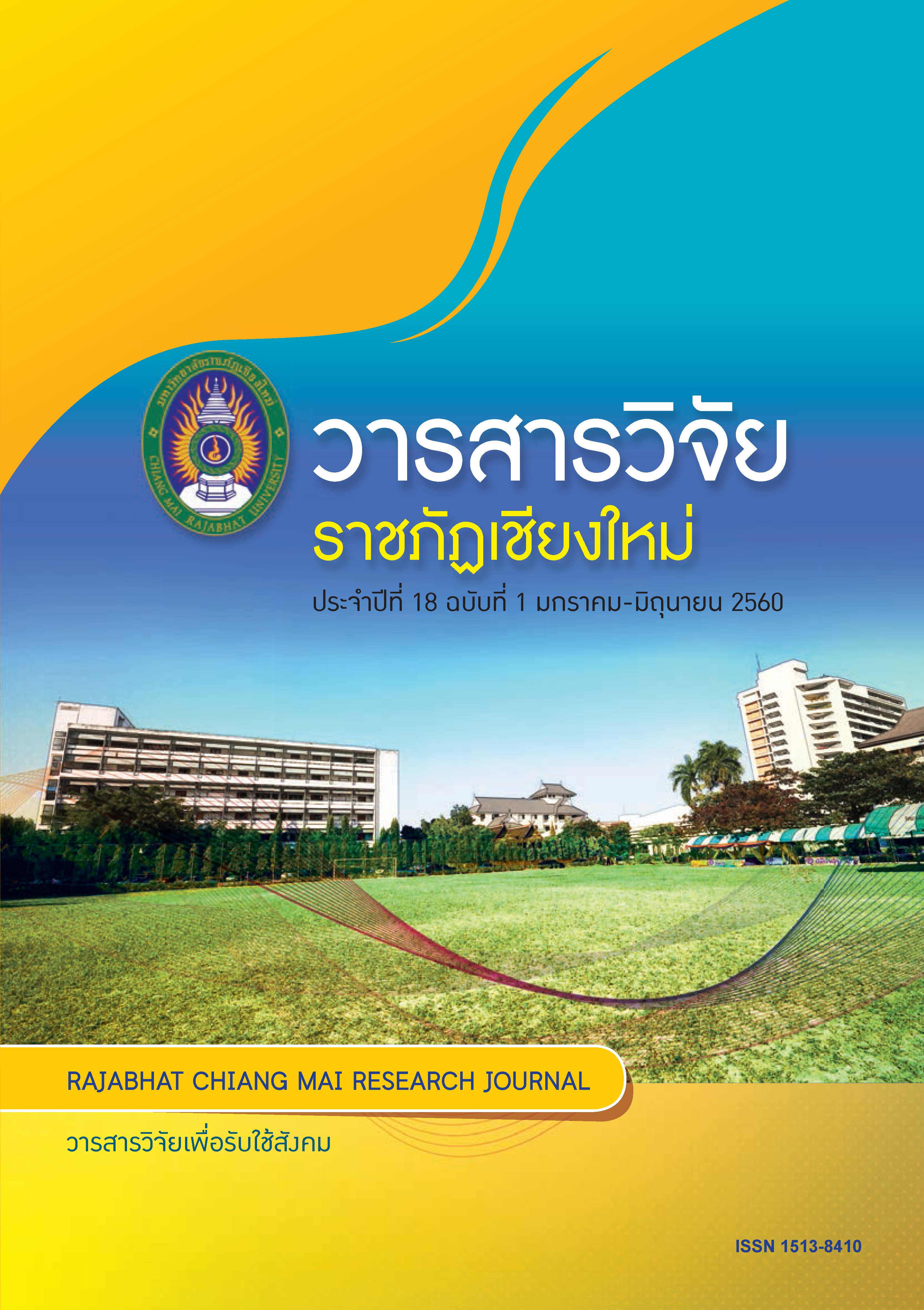Participatory Waste Management Process of elderly in Rim Nuea Sub-District, Mae Rim District, Chiang Mai Province
DOI:
https://doi.org/10.14456/rcmrj.2017.213822Keywords:
waste management, participation, eldersAbstract
This article purposes to present the study of Participatory Waste Management Process of elderly in Rim Nuea Sub-District. The method called Participatory action research: PAR is applied to sustainably manage the waste in the community in order that the people in the community can participate. Moreover, it is to promote the awareness of waste management within the community. With the application of A-I-C process, Waste Management can proceed systematically. This activity is driven by the group of 600 elders in Rim Nuea Sub-District using action research which includes 1) Group conversation to analyze the major problems of waste management; 2) Training to educate how to manage each kind of waste; 3) Workshop to determine the management structure and to establish the Community Waste Management Center. The empirical data was then analyzed according to the deductive method and Methodological triangulation in order to analyze the data with the methods of Descriptive analysis and Content analysis. It is significantly seen that the behavior of people in the community in managing waste within their households is changed positively. The amount of their household reduced to 16.08 percent within 2 months. This promotes the unity of people in participating in the waste management activities; making fertilizers and liquid bio-fertilizers, to use in agricultures, which reduces the expenses of their family. Furthermore, this gives the elders in the community the sense of pride and satisfaction that they are able to create sustainability for their community and make it the community of Zero Waste.
References
ลินิน พูนผล จินดาวัลย์ วิบูลย์อุทัย และธีรยุทธ อุดมพร. 2557. การสร้างบุคคลต้นแบบในการจัดการขยะมูลฝอยโดยอาศัยแรงจูงใจให้แกนนำชุมชนมีส่วนร่วม ชุมชนสามัคคีธรรม เทศบาลตำบลด่านขุนทด อำเภอด่านขุนทด จังหวัดนครราชสีมา. วารสารเกื้อการุณย์, 21(1): 70-83.
ฤาชุตา เทพยากุล. 2555. พฤติกรรมการจัดการขยะมูลฝอยของครัวเรือนในเขตองค์การบริหารส่วนตำบลตาเนาะแมเราะ อำเภอเบตง จังหวัดยะลา. รายงานการวิจัย มหาวิทยาลัยหาดใหญ่.
สำนักประชาสัมพันธ์เขต 3 เชียงใหม่. 2559. จังหวัดเชียงใหม่ขับเคลื่อนการจัดการขยะมูลฝอย. (ระบบออนไลน์). แหล่งข้อมูล: http://www.prdnorth.in.th/ct/news/viewnews.php?ID= 160316134941 (15 มีนาคม 2560)
Berg, B. L., & Lune, H. 2012. Qualitative research methods for the social sciences (8th ed.). New York: Pearson Education.
Creswell, J.W. 2013. Qualitative inquiry and research design: Choosing among five approaches (3rd ed.). Thousand Oakes: SAGE Publications.
Maxwell, J. A. 2013. Qualitative research design: An interactive approach (3rd ed.). Thousand Oaks: SAGE Publications.
Turan, S. O. 2016. User evaluation of the urban park design implementation with participatory approach process. Procedia - Social and Behavioral Sciences, 216: 306 - 315.
Downloads
Published
How to Cite
Issue
Section
License
1. Articles, information, content, images, etc published in the “Community and Social Development Journal” are copyrighted by the Community and Social Development Journal, Chiang Mai Rajabhat University. In order to properly distribute the articles through print and electronic media, the authors still hold the copyright for the published articles under the Creative Commons Attribution (CC BY) license, which allows the re-distribution of the articles in other sources. References must be made to the articles in the journal. The authors are responsible for requesting permission to reproduce copyrighted content from other sources.
2. The content of the articles appearing in the journal is the direct responsibility of the article authors. The editorial board of the journal does not necessarily agree with or share any responsibility.













